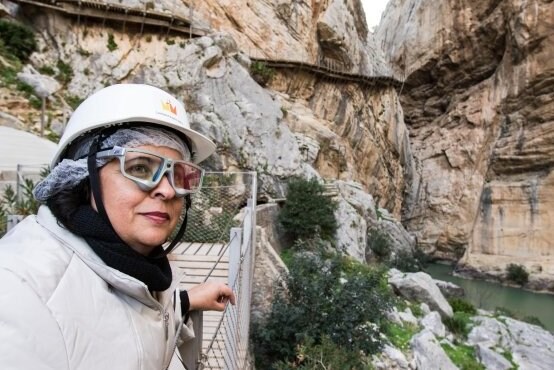

Sections
Highlight

FERNANDO TORRES
Friday, 17 February 2017, 10:59
Compartir
Experts from the neuromarketing company Fusión have carried out a study on people walking on the Caminito del Rey to find out the effect the site has on their emotions.
The eyes. The eyes transmit data constantly through the eye-tracking glasses throughout the journey. Every blink counts.
The brain. Brain waves react to the different images that are seen by the visitor, sending data about the emotions that the participant is feeling at the time.
Other factors. The study is designed to be as non-intrusive as possible, which is why the second phase is carried out immediately after the end of the hike. For the same reason, the glasses are light and are made so that you do not realise you are wearing them.
"The majority of people said yes, as they found our work interesting and the results would be totally anonymous," stated Gabriel Carrasco, the manager of the company.
The study consisted of two phases, the first taking place during the participant's actual visit when the movement of the person's eyes were analysed in real time, while the second phase came at the end when they were shown a series of images of the hike, at the same time as experts analysed their expressions and the behaviour of their brains.
The eye-tracking glasses were connected to a mobile device which stored the information and monitored the person's eyes.
"There were several cameras which recorded the eyeball and another which filmed what the participants were seeing," Carrasco explained.
These images allowed the technicians to establish "the bits which drew the visitors' attention and those that passed unnoticed," he continued.
To avoid bias, it was important that "everything was natural and real" and therefore crucial that the participants "forgot that they were wearing the glasses in the first place," he added.
Once the visit was over and adrenaline still very much in their veins, the participants were taken to another location on site where further monitoring was carried out in a more controlled environment, where photos "which evoke the feelings of the experience they have just had" were shown.
During this phase the experts showed visitors a series of images from various points of the hike.
A bar of sensors located underneath the screen tracked the movement of their eyes for each picture in an incredibly detailed way.
At the same time, the headband measured brainwaves at all times, generating large amounts of data which help ed to identify all the feelings that the participants were experiencing.
Although the official preliminary results will not be published for another few weeks, Carrasco explained that they have already identified "three points on the footbridge stretch which captured the attention of more than 90 per cent of the participants".
Carrasco also confirmed that the attention of 92 per cent of visitors was drawn to a place in the first section of the path which had a "huge emotional impact" on them.
Publicidad
Publicidad
Publicidad
Publicidad
Reporta un error en esta noticia
Necesitas ser suscriptor para poder votar.